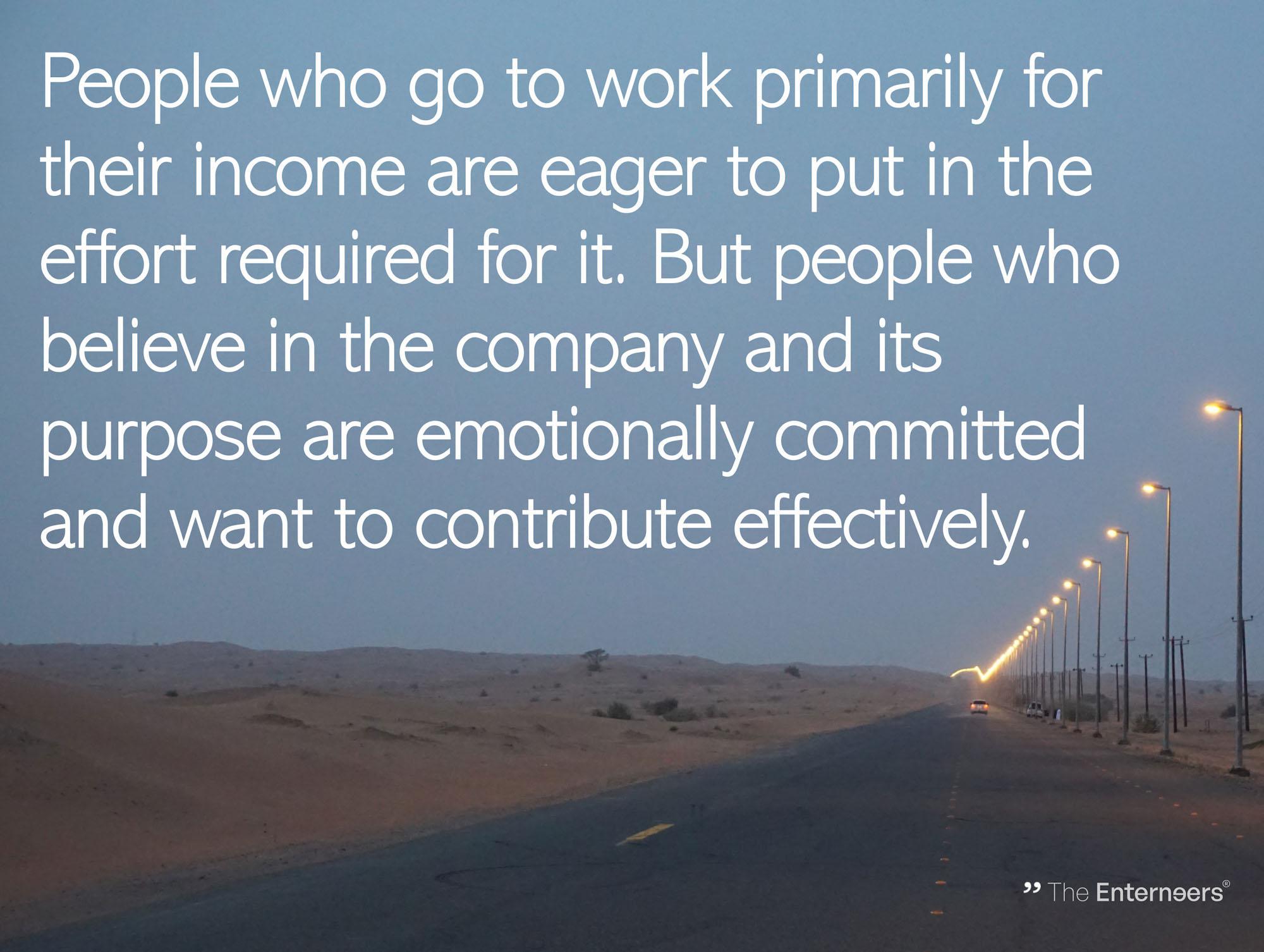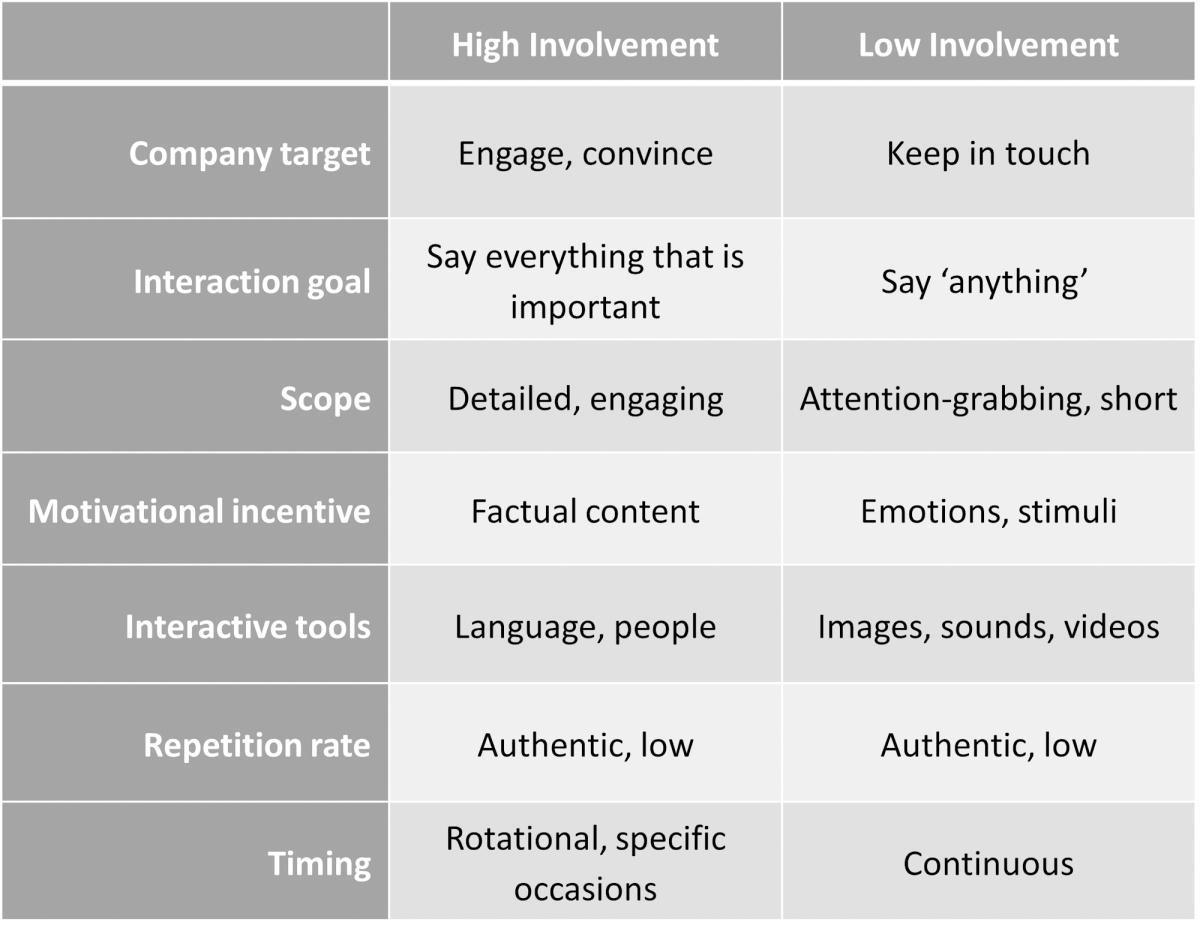3.2.2 Involvement
Elements of Enterneering®/People/Involvement
| ❮ previous | Table of contents | next ❯ |
Successfully starting and running a business also means, in most cases, successfully dealing with people. These can be people who work within the company or those who interact with the company from outside. These different groups of people are typically also called stakeholders. The most relevant stakeholders are most likely employees, customers, suppliers and creditors, as well as shareholders.
Involvement plays a central role in dealing with all stakeholders. Entrepreneurs should know their most important stakeholders and, optimally, take an active approach to the involvement of these groups.
In many companies and professional articles, involvement is equated with engagement. If one takes a closer look and wants to focus more on the activities of the company, a separate consideration makes a little more sense. Involvement is a form of participation that encourages active involvement and refers to the participation of one or more individuals. Therefore, when we speak of involvement, we are referring to the activities, measures and conditions a company must take or create to generate a high level of commitment from its customers, employees or both. Engagement, as a form of personal involvement or commitment, is therefore the result of involvement.
Involvement can be differentiated according to the degree of willingness of a person or a group to engage with a certain topic or environment. This distinction is often made between high involvement and low involvement. Involvement is a component of human interaction that needs to be understood as thoroughly as possible and, ideally, used in a targeted way.
Companies usually want to ensure that certain people are willing to engage particularly intensively and persistently with a topic, a product or the company itself. Sometimes, companies are also urged to interact with other stakeholders. These can include trade unions and authorities, as well as banks and interest groups. In such cases, it is also useful to be aware of and utilise the fundamentals and mechanisms of involvement.
We can talk about two forms of involvement:
- Personal involvement is based on the inclinations and values of a person or a group of people. It automatically develops when people's basic needs or interests align with the company, its culture and its products. Personal involvement, therefore, is usually characterised by a long-term and sustained interest.
- Situational involvement, on the other hand, arises when people's needs and interests align with the topics, products or activities of a company on a temporary basis or in phases, depending on their own life situations.
It is important to understand that, depending on the degree of complexity, involvement can develop or diminish even in the absence of active involvement management. This may lead to positive situations for the company, but it does not necessarily do so. It can also lead to very disadvantageous situations. Involvement, therefore, is something entrepreneurs should not leave to chance when it comes to their most important stakeholders. Effective involvement is based on intrinsic motivation [⬈]. This, in turn, is ideally present in every employee; taking real-life circumstances into account, the prerequisites for this must usually be in place.

The benefits of active involvement strongly depend on which stakeholders are involved. Employees can be tied more closely to the company or to individual projects through their active involvement. This usually leads them to take a greater interest in their work and in the benefits or success resulting from it. This, in turn, leads to greater motivation, growth and willingness to perform. With customer groups, active involvement can also lead to an increase in their loyalty, demand and willingness to buy. But even with stakeholders who are less closely tied to the company, targeted involvement can lead to positive communication and decisions, such as in intentionally partnership-based collaborations with works councils or banks.
The basic rules of interaction with internal stakeholders and external stakeholders in the two categories of high involvement and low involvement can be outlined as follows:
EMPLOYEE INVOLVEMENT
It is not enough to hire the best talent and then train them. For employees to use their talents properly and realise their full potential, they must have a lasting intrinsic interest in the company or in what they themselves are doing. This interest comes from involvement. And, depending on the personality structure of an individual, employees can also be categorised as high involvement and low involvement. To achieve optimal motivation, retention and performance, it is important to involve employees in crucial areas of the company and create a positive culture.
Employee involvement means that employees are able to become personally involved to make an active contribution to the company’s fulfilling its mission and achieving its strategic goals. They can contribute their ideas, expertise and individual approaches to the tasks at hand. Employee involvement refers primarily to the work structures and processes that enable employees to systematically influence planning, preparations and decisions that affect their own work. It is therefore primarily a matter of having influence and helping shape processes, and less about fundamental strategic decisions. Employees need to know about and understand these decisions in the first place to be able to develop their own involvement.
To enable successful involvement, employees should be allowed to participate in process-related decisions. They must have the appropriate skills and authority to do so, and there must be sufficient interaction and incentives to participate.
ELEMENTS OF EMPLOYEE INVOLVEMENT
What steps do companies need to take to keep employee involvement high? Some companies still believe that offering as many material amenities as possible, such as fresh fruit every day, barista specialities, fitness classes and company bikes, with trendy events and cool designations thrown into the mix, will lead to sustained high engagement. However, in Enterneering®, the answer is clear: successful companies are those that understand the elements of Enterneering® and have implemented them in their organisation appropriately. Therefore, no additional methods, approaches or exercises are needed to address the topic of involvement or engagement. In a way, positive engagement among employees and customers alike is one of the direct results of Enterneering®. The following elements of Enterneering® have a direct effect on involvement:
| Cross-references: At this point in the app, it becomes clear that the individual elements in Enterneering® complement each other and develop their full effect in combination. They will probably become fully apparent to you only after you study this app in its entirety. |
Effective companies around the world understand the importance of employee involvement at all levels of the company. Some common elements are:
| ✓ | Participation in continuous improvement teams. |
| ✓ | Participation in quality workshops and quality control circles. |
| ✓ | Self-organised (agile) ways of working. |
| ✓ | Open dialogue on work management issues and workplace design. |
| ✓ | Interactive dialogue on strategy and its implementation progress. |
| ✓ | Creative freedom and workshops alongside day-to-day business. |
| ✓ | Regular, authentic meetings and workshops with the management. |
Finally, there is another characteristic that lies in the behaviour of those with special responsibility in the company: authenticity. Only those companies in which the top management authentically and credibly exemplifies and demands the elements of Enterneering® will have lasting, and thus sustainable, success in securing the commitment of their employees. And presumably, of their customers as well.
| Note on practical application This quickly leads to frustration on all sides and works against the actual goal of involvement. Involvement should not be confused with grassroots democracy. In the end, business decisions and approaches are the responsibility of the management and owners. Involvement must not lead to this becoming a subject of negotiation. |


